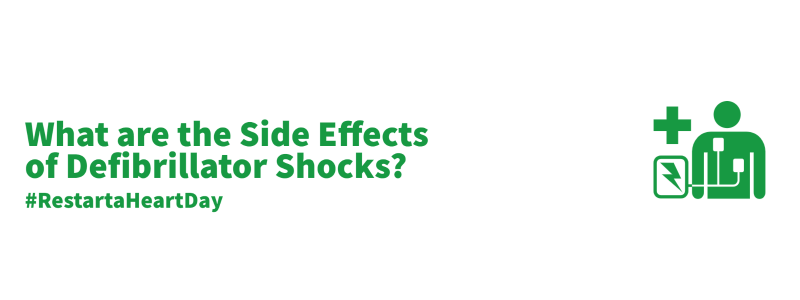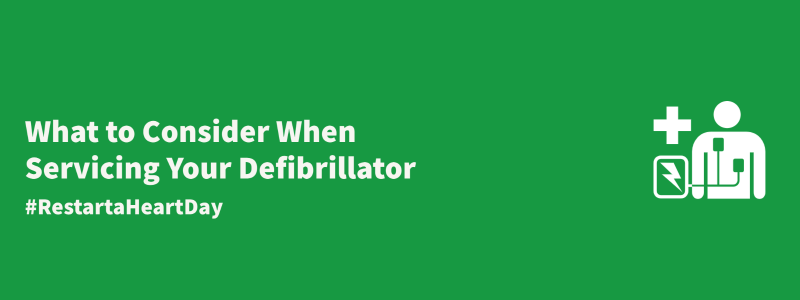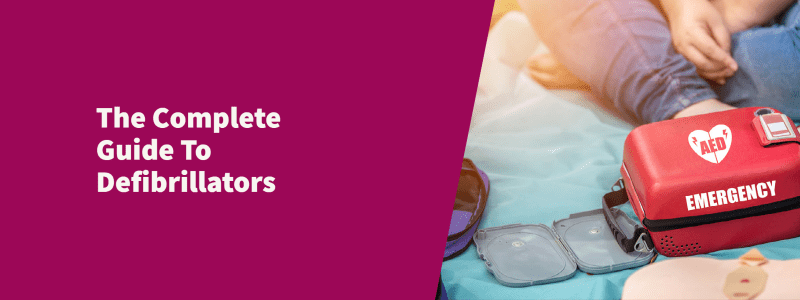As a provider of essential business supplies, we get asked a lot about defibrillators. Whether they are worth footing the bill for, what do they do and more. To answer your question, here is our complete guide to defibrillators.
After a few brief articles in the past giving snapshot guides on these devices, we give you a complete guide to help in deciding whether they’re right for you.
1. What is a Defibrillator?
A defibrillator (also referred to as defib) is a small electrical device that provides a controlled shock to the heart, in the event of a life-threatening arrhythmia called ventricular fibrillation. The most common type of defibrillator is the AED (an automated external defibrillator).
The AED comes in two forms, either semi-automatic or automatic.
A semi-automatic AED like our defibtech lifeline will detect the rhythm of the heart and tell you when to shock the person in cardiac arrest.
A fully automatic AED like the Schiller Defisign Life is designed to be the first person at the scene of a cardiac arrest. If the patient requires a shock, the defibrillator automatically delivers one without any other user intervention required other than placing the pads on the patient.
Modern AEDs are equipped for varying levels of skill, meaning anyone can use a defibrillator. Fully automatic defibrillators will even deliver the shock when required.
2. Why would someone need a defibrillator?
When a cardiac arrest happens, there is a problem coming from the electrical pulses between the patient’s brain and their heart. This prevents the heart from pumping blood to the rest of the body.
Defibrillators save lives by giving a high energy electric shock to the heart through the chest wall when someone is in cardiac arrest.
The purpose of the electric shock is to restore the normal rhythm to the heart.
There is a big difference between a heart attack and sudden cardiac arrest. A heart attack happens when there are issues whereby the pipes in your body that pump blood to and from the heart get clogged. A cardiac arrest is when the heart stops and the person falls unconscious.
3. How long do defibrillators last?
Defibrillators have replaceable parts.
Rather than the actual models themselves, it’s the batteries and electrode packs that need replacing.
Each defibrillator model comes with a stand-by life while it isn’t in use. This ranges between 2-5 years while the unit isn’t in direct use. This doesn’t mean the defibrillator needs replacing, this only means that replacement parts are required.
This comes in as either electrode pads or the replacement battery. Batteries usually last a maximum of 5 years shelf life. Pads are considerably less, with an average of 2 years shelf life. Pads should be replaced after each use. Batteries have a maximum number of shocks before replacements are needed too. Most appliances will do their own safety check each day and alert you when a battery is low.
For more information on the lifespan of batteries for specific defibrillator models, read our Defibrillator Batteries: Lifespan blog post, here.
Click Here to Call for a Defibrillator Quote
4. How many times can a defibrillator be used?
You can use a defibrillator for as long as you can get replacement parts. The battery, for example, is the biggest variable here. The battery can last between 2-5 years. However, each time the defibrillator is used, it needs replacement pads. These should be bought and stored in advance, so the defibrillator can be used once more straight after an incident. The battery can be used while there is battery life, the charge of the battery will simply reduce.
Some defibrillators auto-check the battery life and will make you aware via the screen whether and when it needs replacing. There are lots of moving parts, and that’s why we created our complete guide to defibrillators.
5. How many times can a person be defibrillated?
In short; a person can be shocked as many times as necessary, however, with each shock that fails to return the heart to a normal rhythm, the chances of survival decreases.
It is, however, important to remember the following factors:
- How many shocks can the battery on your AED deliver?
- How many batteries do you have for your AED?
Every minute without CPR or defibrillation reduces the victim’s survival chances by between 7% and 10%
One study suggested a minimum of 2-3 shocks are most closely related to long-term survival afterwards.
However, physical and underlying conditions vary in people, defibrillators greatly extends survival chances.
6. What are the survival chances using a defibrillator?
Research suggests that using a defibrillator within the first 3-5 minutes of cardiac arrest improves that chances of survival by 50-70%. Furthermore, immediate AED treatment can have a survival rate of 90-95%. Clearly the quicker the patient gets treatment, the better.
Our complete guide to defibrillators gives you the lowdown on many of the questions our customers ask us on a regular basis. However, here are some of our other blogs on defibrillator education:



